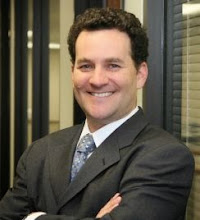In previous posts, I've discussed the theory that individuals act rationally and the efforts of Daniel Kahneman, Amos Tversky, and others to disprove that theory. For example, as I discussed here, Kahneman and Tversky pointed out that people avoid risk when they stand to gain and seek risk when they stand to lose -- hardly rational behavior. And as I discussed here, people evaluate losses and gains relative to their own reference points, which change over time, rather than to fixed reference points that apply equally to all.
Another key element of Kahneman’s work is the principle of diminishing sensitivity to loss and gain. The idea is this: the difference between a gain of $100 and a gain of $200 is $100. The difference between a gain of $10,100 and a gain of $10,200 also is $100, but the incremental gain in the second example does not have the same impact as the incremental gain in the first. In other words, for most people the difference between $100 and $200 is far more significant than the difference between $10,100 and $10,200.
For example, Richard Thaler in 1980 posited that people would go out of their way to save $5 on a $25 purchase, but would not go out of their way to save $5 on a $500 purchase. Others have confirmed this in numerous studies in the years since. Kahneman and Tversky found that 68% of people would drive 20 minutes to save $5 on a $15 calculator (when they also were hypothetically buying a $125 jacket), but only 29% would do so to save $5 on a $125 calculator (and they also were hypothetically buying a $15 jacket).
The total purchase price is $140 in each scenario, and the total savings is $5, but the human reaction is completely different. That could not be less rational.
Diminishing sensitivity to incremental change helps to explain the irrational risk avoiding / risk seeking behavior we discussed earlier. Consider Denise, the salesperson who took the sure thing, even though she likely could have obtained more by taking more risk. Part of her reason for accepting the settlement may have been her sense that the settlement offered was a large amount of money, and she would not gain dramatically from any incremental increase over and above that amount. Her sensitivity to any potential increase diminished as her position improved.
Diminishing sensitivity to loss also helps explain why Company C would choose to take its chances in court. When people face bad situations – for example, when they face a certain loss in settlement, as compared to a larger loss at trial that is not certain but is merely probable – diminishing sensitivity causes them to ignore the greater risk of going forward. In all likelihood, settlement is Company C's best course of action, but its diminishing sensitivity to the potentially greater loss at trial causes it to ignore that greater risk. In other words, it figures that if it is going to lose anyway, it might as well take a shot at trial, where it could lose zero, even if the odds of that outcome are relatively low.
What all of this points to is this: the diminishing sensitivity to incremental loss and gain has a tremendous impact on the way that people make decisions. Those of us who work to help people resolve difficult situations must understand these cognitive errors in order to do the best job possible for our clients.
Next time, we will discuss why the difference between a $10,000 loss and an $11,000 loss is much greater than the difference between $10,000 gain and an $11,000 gain: Losses Loom Larger Than Gains.





